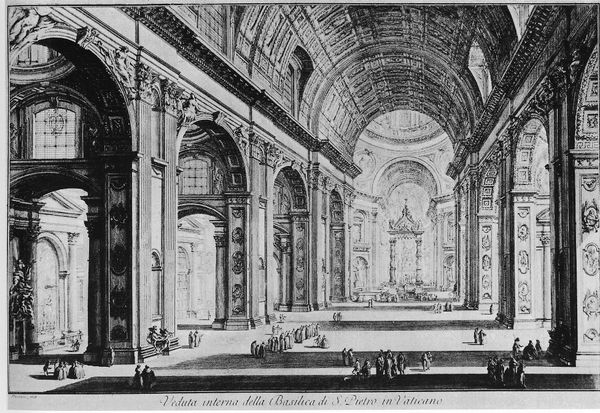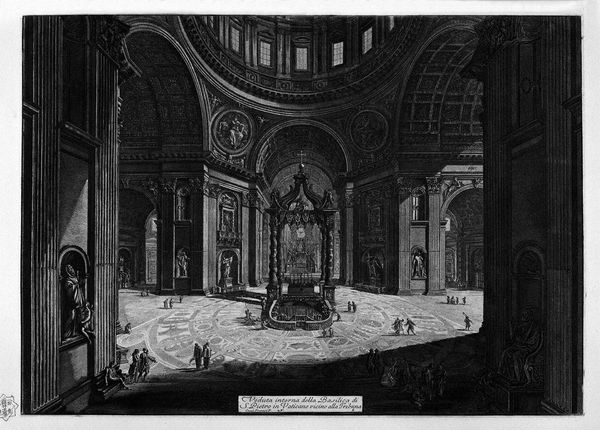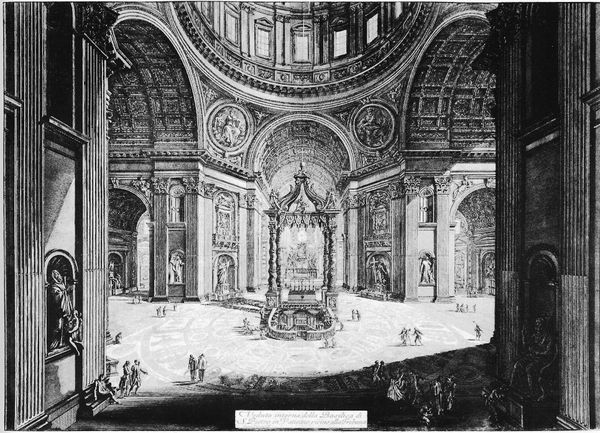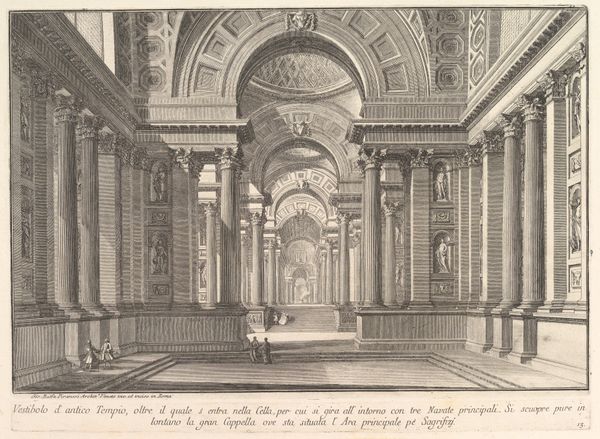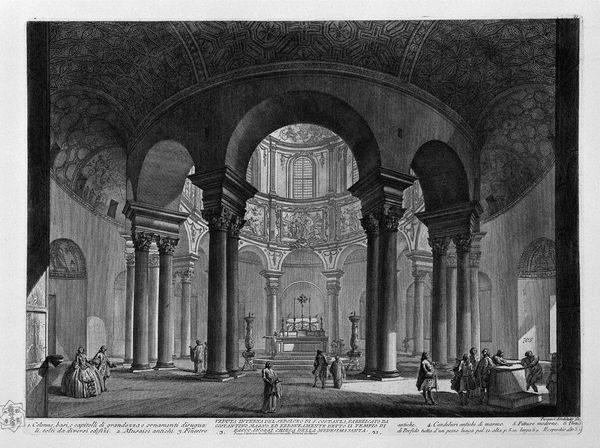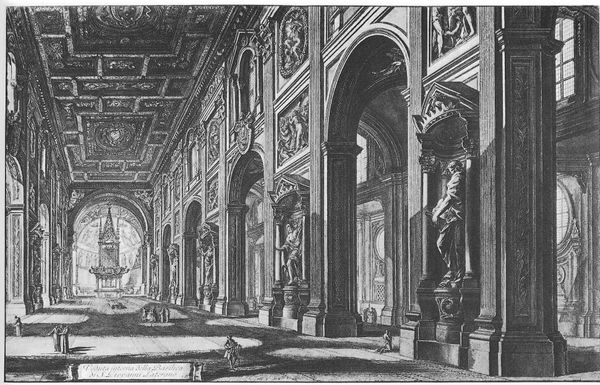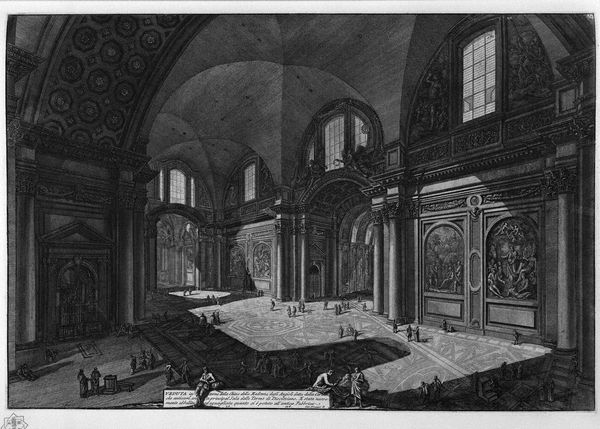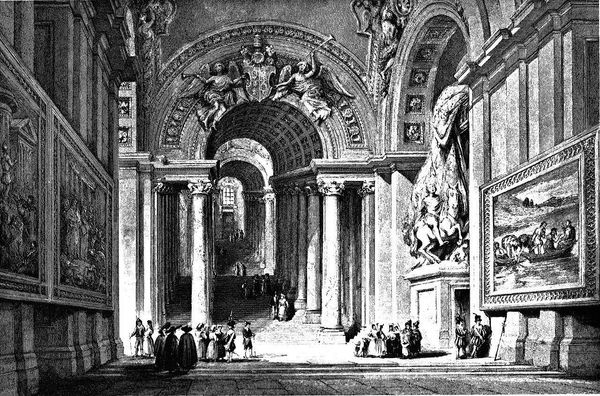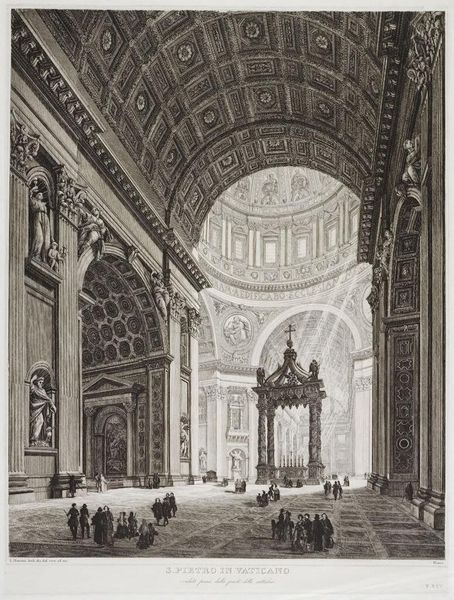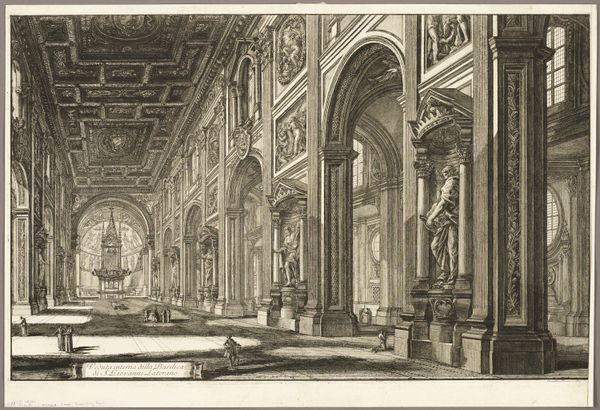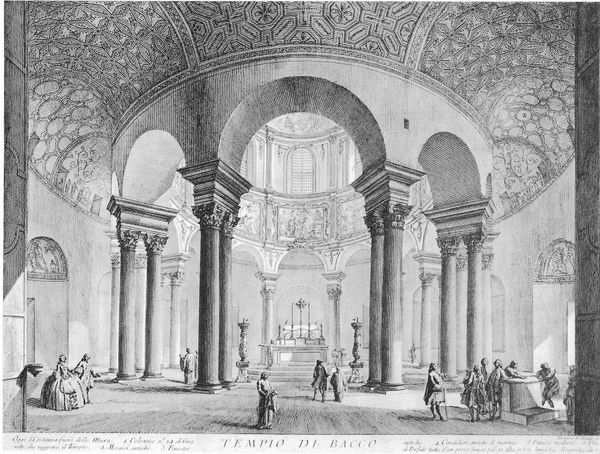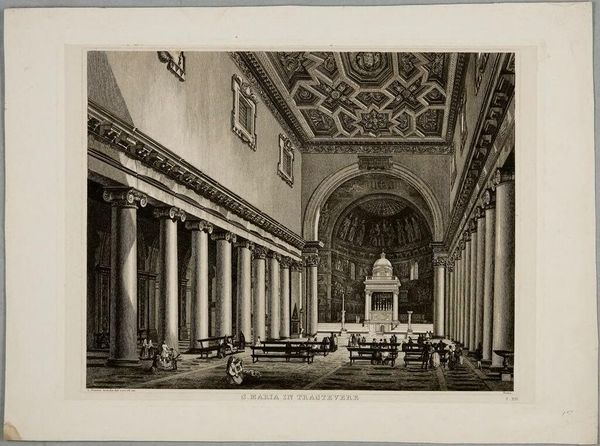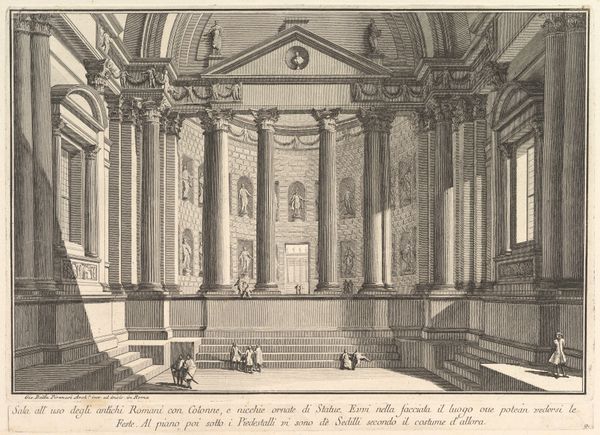
View of the great Basilica of St. Peter`s Square and was originally located where the Cirque and the Gardens of Gaius and Nero in the Valley of the Vatican
0:00
0:00
drawing, print, etching, engraving, architecture
#
drawing
#
baroque
# print
#
etching
#
perspective
#
arch
#
cityscape
#
italian-renaissance
#
engraving
#
architecture
Copyright: Public domain
Curator: This etching is by Giovanni Battista Piranesi and it depicts an interior view of St. Peter's Basilica in the Vatican. It is grand, Baroque splendor at play, don't you think? Editor: Vast and austere… it whispers power, but also isolation. All those tiny figures are dwarfed, utterly. Almost feels like an Escher drawing gone holy. Curator: Precisely. Piranesi was a master of perspective, particularly with architectural subjects, and it seems relevant that this composition also places St. Peter's where Nero’s Circus and Gardens once stood, in the Valley of the Vatican. Talk about palimpsests! Editor: Right, those layers upon layers. Nero's playground replaced by a center of faith. I see this play of light and shadow – so dramatic – almost a stage set. Are we supposed to feel awe, or intimidated by this show of force? I am thinking the artist wanted to show an immutable faith! Curator: Both, perhaps? The Baroque sought to overwhelm the senses, to inspire a sense of the divine through sheer scale and ornamentation. Look at how the light streams in, illuminating the altar...the emotional effect is quite carefully planned and implemented. Light often signifies divinity. Editor: And then the arches upon arches, a sort of infinite regression leading the eye…it's almost oppressive in its grandeur. It makes me wonder about Piranesi himself. Curator: Many believe Piranesi saw architecture as almost ruins of their present form, the same way a distant past casts long shadows. The Basilica, for him, was perhaps not just a building but a repository of centuries of faith, power, and, indeed, ruin. His art can be seen as very emotive, don't you think? Editor: Absolutely. And this isn't just documentation; it's an interpretation, charged with his personal feelings and perhaps misgivings. Looking closely, this perspective is far from natural – very wide. This reminds me that everything is perceived differently by the artist and audience. Curator: Yes, a perspective unique to the author and his interpretation of the location and the cultural meaning behind its inception. Editor: In a way, Piranesi reminds us that every place is a stage for human drama, constantly reshaped by our collective memory and…well, hubris.
Comments
No comments
Be the first to comment and join the conversation on the ultimate creative platform.
